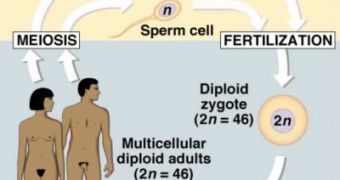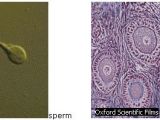Both eggs and sperm form from the same kind of initial cells present in the embryos. But while in case of females the eggs are formed before birth, in case of males the sperm is produced after birth. Unlike sperm, the eggs are produced in a limited number; women are born with a certain number of eggs that are then released one by one (occasionally two) at each ovulation.
The team, led by Dr Josephine Bowles and Professor Peter Koopman from the Institute for Molecular Bioscience at The University of Queensland, Australia, has discovered what triggers the beginning of egg and sperm production.
"Whether a germ cell develops into an egg or a sperm depends on the time at which meiosis begins," Koopman said. Meiosis is the process by which the initial cells, called germ cells, having two chromosomes (diploid cells) turn into eggs or sperm - which have only one chromosome (haploid cells). "In females, meiosis begins before birth and eggs are produced, whereas in males, meiosis begins after birth and the result is sperm."
Professor Koopman and his team have now found why this difference exists. They found that retinoic acid, a derivative of Vitamin A, causes germ cells in female embryos to begin meiosis, leading to the production of eggs. On the other hand they discovered an enzyme present in male embryos that wipes out retinoic acid and suppresses meiosis until after birth, resulting in sperm production.
"This is an extremely important process that nobody has been able to figure out until now," said Koopman. "It is textbook science and it should provide the basis for a number of practical applications."
Professor Koopman said that this discovery may also prove to be of medical importance for example in infertility treatments. He also suggested that this may give clues about why testicular cancer develops - an inappropriate retinoid signal might give the wrong instructions to germ cells, which could lead to the formation of germ cell tumors.
Image credit: Addison Wesley Longman; Oxford Scientific Films

 14 DAY TRIAL //
14 DAY TRIAL // 
